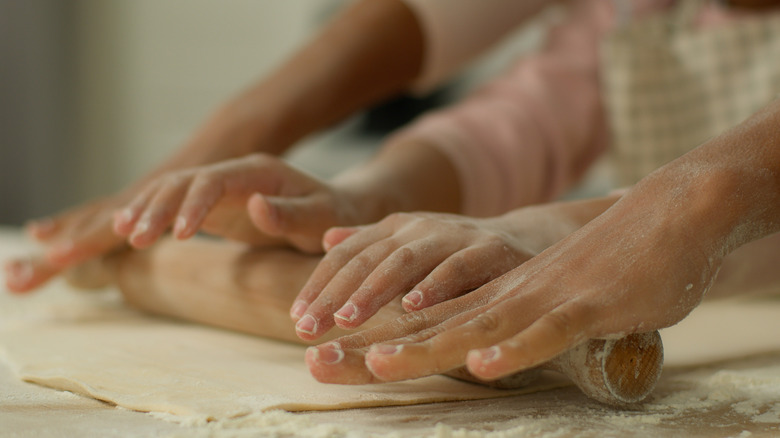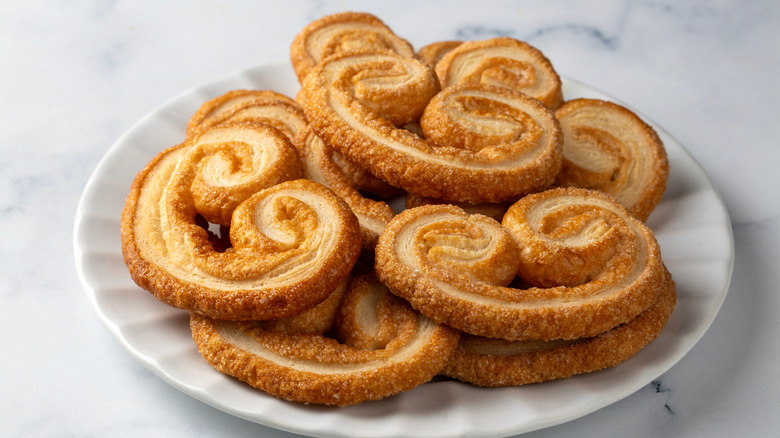Don't Throw Out That Extra Thanksgiving Pie Crust, Turn It Into A Next-Day Dessert Instead
Thanksgiving is the pie holiday, and you'll probably have leftover dough. Don't throw it away or shove a balled-up lump in the back of your freezer — save it for the next day and make palmiers. Yes, I know — you cooked and baked for days already and the last thing you want is more dishes. What you do want, however, is a fancy-looking dessert that's easy, quick, and mess-free. Also known as elephant ears, palmiers are those beautiful, curled, airy, sugary pastries that look like something you'd buy in a bakery — and they're simple to make.
Pour sugar on a clean, flat surface. Roll out your pie dough into a square about ⅛-inch thick, then sprinkle more sugar (and maybe spices) evenly on top. Tightly roll each end toward the center. Wrap the log in plastic and chill for 30 minutes to two days. When you're ready to bake, heat the oven to 400 degrees Fahrenheit, then slice the dough by looping plain dental floss under and through (the best trick) or using a bench knife to cut uniform slices between ¼ and ½ inch thick. Arrange them on a lined baking sheet and bake until the sugar melts on one side (about 12 minutes), then flip and continue baking until golden and crisp (about 10-12 more minutes).
Classic palmiers are only puff pastry and sugar, but since it's fall, lean into the cozy vibes with cinnamon, nutmeg, and cardamom, or pumpkin pie spice (here's how to DIY your own).
How to make your pie crust extra flaky
Since palmiers are usually made with puff pastry, and we're using pie crust instead, here are some tips for making the perfect pie dough. Flaky, buttery pie crust is within your grasp! The secret is ice-cold ingredients. Keeping everything cold slows down gluten development, which would make the dough chewy instead of tender.
You want to start with ice-cold butter — stick it in the freezer until you're ready to use it. When cold butter melts in the oven, it creates steam pockets that turn into flaky pastry dough. You could use a box grater or dice it into small chunks before using a pastry cutter to incorporate it into flour, or you could try an advanced French technique called fraisage, where you press and smooth butter into the flour. It's almost like laminating the dough like you would for puff pastry. If you're new to pie dough, master the basic method before trying fraisage, but once you make pie crust like this, you'll never turn back.
Pie dough also needs a cold liquid like water, vodka, or orange juice — stick ice cubes in there before pouring to keep it as cold as possible and prevent the butter from warming up. By keeping every ingredient ice-cold from start to finish, you'll enjoy buttery, flaky, tender pie crust that's perfect for pies, palmiers, and anything else.

